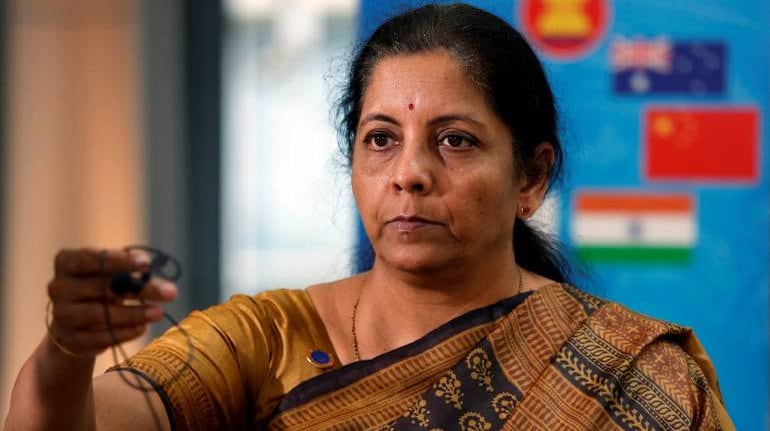
Centre seeks Parliament nod for additional net cash expenditure of up to Rs 1.67 lakh crore
For meeting expenditure towards recapitalisation of public sector banks through government securities, the government has sought Rs 20,000 crore
by Kamalika GhoshIn the wake of the coronavirus pandemic-induced recession, the finance ministry has sought Parliament's approval for gross additional expenditure of Rs 2.36 lakh crore, of which the the net cash outgo would be to the tune of Rs 1.67 lakh crore.
The gross additional expenditure, matched by savings of the ministries and departments by enhanced receipts/recoveries, aggregates to Rs 68,868 crore.
"The large additional net cash outgo of Rs. 1.67 lakh crore in the first supplementary demand for grants is partly comprised of new items announced under the fiscal support plan, stepped up health expenditure, as well as some items that were under-budgeted earlier, such as the revenue deficit grants in relation to the Fifteenth Finance Commission's recommendations," Aditi Nayar, principal economist, ICRA, said.
Under the Mahatma Gandhi National Rural Employment Guarantee Act (MGNREGA), the government sought Rs 72,000 crore, of which Rs 32,000 crore would be for the creation of capital assets and Rs 40,000 crore would be for transfer of funds to the National Employment Guarantee Fund.
COVID-19 Vaccine
Frequently Asked Questions
View more
How does a vaccine work?
A vaccine works by mimicking a natural infection. A vaccine not only induces immune response to protect people from any future COVID-19 infection, but also helps quickly build herd immunity to put an end to the pandemic. Herd immunity occurs when a sufficient percentage of a population becomes immune to a disease, making the spread of disease from person to person unlikely. The good news is that SARS-CoV-2 virus has been fairly stable, which increases the viability of a vaccine.
How many types of vaccines are there?
There are broadly four types of vaccine — one, a vaccine based on the whole virus (this could be either inactivated, or an attenuated [weakened] virus vaccine); two, a non-replicating viral vector vaccine that uses a benign virus as vector that carries the antigen of SARS-CoV; three, nucleic-acid vaccines that have genetic material like DNA and RNA of antigens like spike protein given to a person, helping human cells decode genetic material and produce the vaccine; and four, protein subunit vaccine wherein the recombinant proteins of SARS-COV-2 along with an adjuvant (booster) is given as a vaccine.
What does it take to develop a vaccine of this kind?
Vaccine development is a long, complex process. Unlike drugs that are given to people with a diseased, vaccines are given to healthy people and also vulnerable sections such as children, pregnant women and the elderly. So rigorous tests are compulsory. History says that the fastest time it took to develop a vaccine is five years, but it usually takes double or sometimes triple that time.
For meeting expenditure towards recapitalisation of public sector banks through government securities, the government has sought Rs 20,000 crore.
"Our baseline expectation is now that the Government of India's fiscal deficit will widen to at least Rs 14 lakh crore, or 7.4 percent of gross domestic product (GDP), in FY21," Nayar said.
Though faced with revenue shortfall due to the nationwide lockdown to control the spread of Covid-19, the government has time and again reiterated that there would be no compromise on capital expenditure.
The GDP data for the April-June quarter showed that the Indian economy contracted 23.9 percent year-on-year due to the lockdowns imposed in March.
To tide over the economic fallout of the COVID-19 pandemic and subsequent lockdowns, the government in May announced a stimulus package worth nearly Rs 21 lakh crore. Even before the pandemic struck, the Indian economy was experiencing a slowdown as it grew at 4.2 percent in FY20.
With the economy now officially entering contraction, the government's focus would now be to revive growth. Experts believe that greater capital expenditure has a higher multiplier effect.
The government would have to undertake higher public investments in infrastructure, which would allow global supply chains to invest more. Announcement of new projects, increased construction activity, timely payment, and initiation of fresh projects are some of the ways in which demand could be generated in the economy.